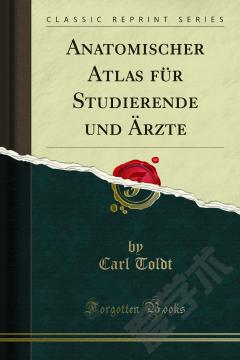An Atlas of Human Anatomy —— For Students and Physicians
-----
The science of human anatomy is purely descriptive in its methods, the field it covers is not very extensive, and its boundaries are sharply limited; it is, therefore, one of the few sciences in which something closely verging on finality and completeness has been attained. Even, however, if no new anatomical data are likely to be forthcoming, there is yet scope for originality in the method of presentation of those data of which the science now consists; and originality of this kind Professor Toldt's Atlas of Human Anatomy exhibits in a high degree. In the many admirable manuals of human anatomy now extant in English, the illustrations, even when numerous, as they are often, and when good, as they are occasionally, form a mere supplement — usually a very imperfect supplement — to the text. Atlases of anatomy, and useful atlases, also exist in English, but all are quite fragmentary. Some, like the well-known and valuable, but somewhat antiquated, Illustrations of Dissections, consist of a series of pictures of. Selected regions carefully prepared on the cadaver: these are models for the imitation of the student in his own dissecting work, but are not of much value for private study. Others, like Bellamy's English edition Of Braune's atlas of frozen sections Of the human body, present a small number Of anatomical facts from a striking and unfamiliar point of view. But among English works, an accurate pictorial representation of all the data of human anatomy, carefully drawn to scale from actual specimens, and arranged suitably for systematic study, has hitherto been lacking.
{{comment.content}}








 京公网安备 11010802027623号
京公网安备 11010802027623号